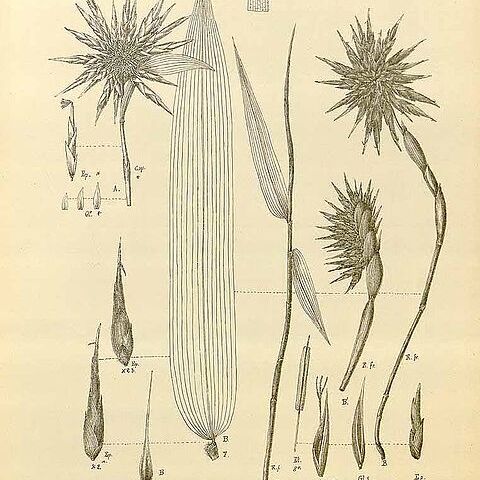Spikelets sessile, 1-4-flowered, with the uppermost floret hermaphrodite, the lower sterile, terete or slightly laterally compressed, deciduous at maturity; rhachilla-internodes very short, not produced beyond the uppermost floret.
Lemmas exceeding the glumes, progressively increasing in length towards the apex, 26-32-nerved, with transverse veinlets, dorsally rounded, with the apex pungent.
Glumes 2 (rarely 3), 17-30-nerved, with transverse veinlets, dorsally rounded, chartaceous to coriaceous; the inferior one shorter than the superior.
Inflorescence of contracted clusters of spikelets terminating leafy branchlets; each cluster in the axil of a papery sheath with a short lamina.
Paleas 16-19-nerved, the ones in the lower florets 2-keeled and dorsally concave, the one in the uppermost floret without keels and convolute.
Caryopsis with fused pericarp, narrowly fusiform, crowned with persistent base of the styles.
Robust tree-like bamboos, with stout stoloniferous rhizomes.
Stamens 6, with the anthers mucronate; filaments connate.
Leaf-laminae finally disarticulating from the sheath.
Ovary glabrous; style hollow; stigmas 3.
Lodicules usually absent.

